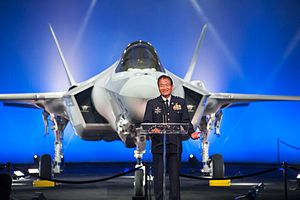When President Rodrigo Duterte of the Philippines announced a “separation from the United States” and a warming of Sino-Philippines relations during his state visit in China on October 20, disagreements over China’s activities in the South China Sea entered a new phase. The Filipino president himself seems ready to disregard the Permanent Court of Arbitration (PCA) ruling against China’s claim in South China Sea, including Scarborough Shoal and the Spratly Islands.
Despite Duterte’s strong words during his China visit, it is not yet clear to what degree the Philippines will reorient its foreign policy to align itself closer with China, or how badly his rhetoric will damage the U.S.-Philippines alliance over the long term. His rhetoric toward fellow U.S. ally Japan has been much warmer. In Duterte’s visit to Japan on October 26, he described the Philippines and Japan as “closer than brothers.” In the Joint Statement issued after the official bilateral meeting, Prime Minister Shinzo Abe and Duerte declared that their two countries are committed to strengthen their strategic partnership “based on such common values as freedom, democracy, the rule of law, respect for basic human rights, and a free and open economy.” The two leaders also acknowledged that the South China Sea issue needs to be settled through “rule-based approach.”
At the same time, Duerte also stated that he wanted foreign troops out of the Philippines by 2018. Abe met with Duterte one-on-one and is said to have urged him to repair ties with the United States, stressing the U.S. role in Asia-Pacific security, but Duterte’s response to Abe’s plea is unclear. At minimum, Duterte’s signal that he is willing to shift toward Beijing will likely further embolden China in the South China Sea, at precisely the time when the U.S. military seeks to accelerate the implementation of its Third Offset Strategy (3OS).
3OS, first announced in November 2014 by then-Secretary of Defense Chuck Hagel, was driven by mounting concern in the American defense establishment that the United States’ competitive edge in defense technology vis-à-vis its potential adversaries has been quickly shrinking. Unlike the first and second offset strategies, which focused on maintaining a military-technical advantage over the Soviet Union, 3OS tries to respond to multiple potential adversaries and a much wider range of threats, some as yet unforeseen and all evolving. Particularly in the context of the Asia-Pacific region, 3OS can be useful to better equip the United States to meet the full spectrum of security challenges that it faces in the region, from major power competition with China to countering the threat of nuclear proliferation from North Korea and elsewhere and responding to the challenges posed by non-state actors.
As the United States develops new technologies and operational concepts, and finds ways to better leverage existing technologies, collaboration with U.S. alliance partners will be instrumental to implementation. Japan, with its own defense innovations, can be a natural and very capable partner to work with the United States in this strategy. Already experienced in cooperative joint defense technological development with the U.S., Japan boasts a highly advanced Self-Defense Force (SDF) that has enjoyed deep military-to-military cooperation with the United States, share many of the same security concerns worldwide, and has a very robust industrial and technological base.
Furthermore, Japan’s need for defense innovation is, in a sense, more urgent than the U.S. need. Even if Japan’s SDF is among the world’s most sophisticated military forces having a high level of interoperability with the U.S. military, its total size is roughly the same as the U.S. Marine Corps, with Japan’s defense budget approximately one-tenth of that of the United States’.Due to an aging and declining population, coupled with an economy that has yet to pick up from two decades of economic stagnation, Japan will not have the capacity to considerably increase its investment in national defense. Under such grim fiscal prospects, Japan will have to rely on innovation, both to maintain its superiority in certain military and dual-use technology, and to collaborate with its allies and partners to maximize its limited defense resources. The revision of Japan’s arms export principles and the establishment of the Acquisition, Technology, and Logistics Agency (ATLA) within the Japan Ministry of Defense (JMOD) are parts of Japan’s efforts to streamline the research and development (R&D) and acquisition process to better harness the innovation that often emerges outside JMOD.
In this context, 3OS can provide a wealth of opportunities for the United States and Japan to further cooperate to facilitate their respective defense innovation efforts. Indeed, the U.S. and Japan have already begun to explore such prospects. The two governments can certainly look for additional collaborative projects, such as the possibility of Japanese participation in the development of advanced weapon platforms in the United States.
By leveraging their alliance cooperation in the implementation of 3OS, the United States and Japan can together remind all U.S. allies and partners of the benefits of alliances with Washington and the credibility of U.S. commitments. In an era of rapidly changing technology and warfighting concepts, with states and non-state actors both posing challenges to security and peace, 3OS is an opportunity to show the ability of the U.S.-Japan alliance to anticipate potential military challenges and make a long-term investment that will ensure the stability of the Asia-Pacific region. Simply put, collaboration in 3OS, if ably carried out, can truly anchor the U.S.-Japan alliance as “the cornerstone of peace and stability in the Asia-Pacific region.”
Yuki Tatsumi is a Senior Associate of the East Asia Program at the Stimson Center in Washington, D.C.
Pamela Kennedy is a Research Associate at the Stimson Center

































